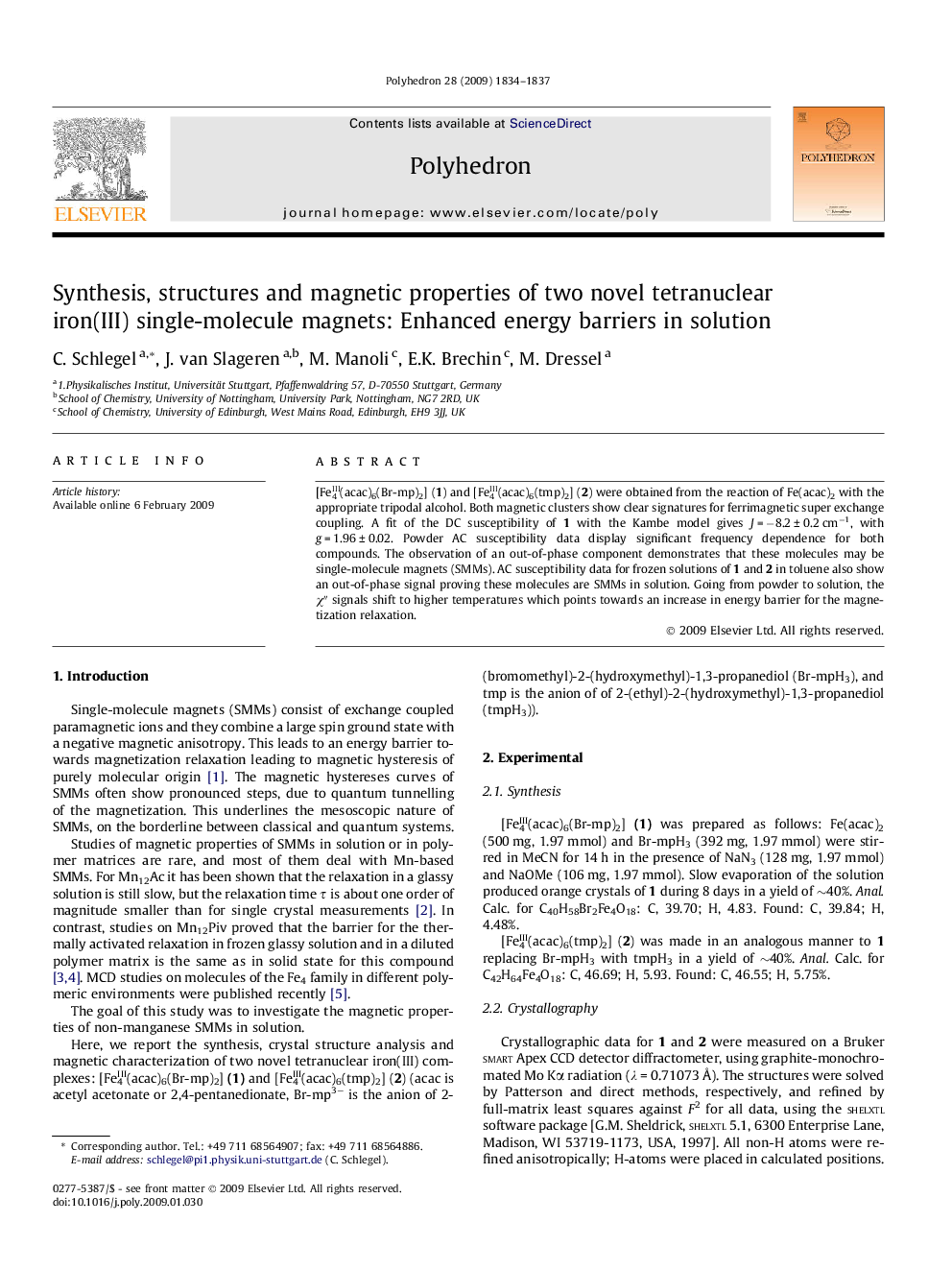| کد مقاله | کد نشریه | سال انتشار | مقاله انگلیسی | نسخه تمام متن |
|---|---|---|---|---|
| 1339937 | 1500292 | 2009 | 4 صفحه PDF | دانلود رایگان |

[FeIII4(acac)6(Br-mp)2] (1) and [FeIII4(acac)6(tmp)2] (2) were obtained from the reaction of Fe(acac)2 with the appropriate tripodal alcohol. Both magnetic clusters show clear signatures for ferrimagnetic super exchange coupling. A fit of the DC susceptibility of 1 with the Kambe model gives J = −8.2 ± 0.2 cm−1, with g = 1.96 ± 0.02. Powder AC susceptibility data display significant frequency dependence for both compounds. The observation of an out-of-phase component demonstrates that these molecules may be single-molecule magnets (SMMs). AC susceptibility data for frozen solutions of 1 and 2 in toluene also show an out-of-phase signal proving these molecules are SMMs in solution. Going from powder to solution, the χ″ signals shift to higher temperatures which points towards an increase in energy barrier for the magnetization relaxation.
Two new tetranuclear iron(III) single-molecule magnets were synthesized and fully characterized. AC susceptibility measurements show that the energy barrier increases going from powder to frozen solution samples.Figure optionsDownload as PowerPoint slide
Journal: Polyhedron - Volume 28, Issues 9–10, 22 June 2009, Pages 1834–1837